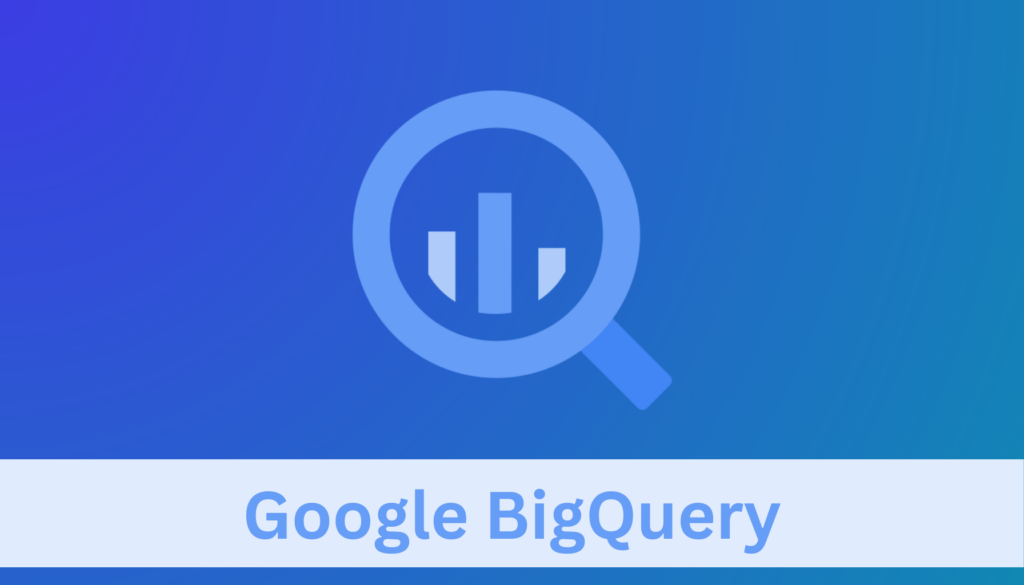What is Google BigQuery?
Google BigQuery is a fully managed, serverless data warehouse that enables scalable analysis over petabytes of data. It is a powerful Big Data analytics platform used by all types of organizations, from startups to Fortune 500 companies. The primary function of BigQuery is to enable fast SQL queries against large datasets by using Google’s infrastructure.
BigQuery stands out for its ability to process massive datasets at blazing-fast speeds, offering insights almost in real time. This capability simplifies complex data analytics tasks, making it an invaluable tool for data analysts, data scientists, and businesses focusing on data-driven decision-making.
Breaking Down the Core Features of Google BigQuery
BigQuery, as a leading data warehouse solution from the Google Cloud Platform, offers a range of powerful features. Each feature is designed to satisfy the varied demands of modern data analytics, ensuring efficiency, scalability, and reliability. Let’s look into these core features to understand how they contribute to making BigQuery a preferred choice for data analysts and businesses alike.
1. High-Performance SQL Engine
BigQuery’s high-performance SQL engine is at the core of its functionality. This engine allows for the execution of complex SQL queries at incredible speeds, even across large datasets. It leverages Google’s Dremel technology to ensure that the data processing is both fast and efficient. This feature is particularly beneficial for businesses that need to perform real-time analytics on large volumes of data.
2. Scalability and Storage
One of the most significant advantages of BigQuery is its auto-scaling capability. It can handle increasing data sizes without the need for manual intervention. This scalability ensures that storage and processing capabilities grow with your data needs. The storage is not only vast but also managed, meaning you don’t have to worry about the administration of data storage infrastructure.
3. Data Transfer and Integration
BigQuery provides seamless integration with various data sources, making it easy to import data from external sources. It supports data transfer from Google Cloud Storage, transactional databases, streaming data sources, and even third-party cloud services. This flexibility is crucial for organizations that rely on multiple data sources for their analytics.
4. Machine Learning Capabilities
An exciting feature of BigQuery is its built-in machine learning capabilities, known as BigQuery ML. This allows data scientists and analysts to build and deploy machine learning models directly within BigQuery using familiar SQL queries. It eliminates the need for separate ML tools and simplifies the process of predictive analytics.
5. Security and Compliance
Security is a top priority in BigQuery. It offers robust security features including identity and access management, data encryption at rest and in transit, and detailed audit logs. Compliance with standards like ISO, HIPAA, and GDPR is also supported, ensuring that data is handled securely and in compliance with global regulations.
6. Monitoring and Analysis Tools
BigQuery provides comprehensive monitoring and analysis tools that help optimize query performance and manage costs. These tools include a query execution plan, detailed cost analysis, and performance insights. This suite of tools aids in identifying potential bottlenecks and optimizing queries for better performance and cost-efficiency.
Google BigQuery Pricing Overview
Understanding the pricing structure of BigQuery is crucial for effective budget management and to ensure that the services align with your business requirements. Let’s break down the various aspects of BigQuery’s pricing to provide a clear view of its cost implications.
Overview of Pricing Structure
BigQuery’s pricing model is primarily usage-based, meaning you pay for the data processed by your queries and the data stored in BigQuery. This approach aligns costs directly with usage, offering flexibility and scalability. It’s designed to be cost-effective for both small-scale users and large enterprises handling massive datasets.
Pricing Components
- Query Processing: Costs are incurred based on the amount of data processed by each query. BigQuery’s on-demand pricing charges for the number of bytes processed.
- Storage Costs: There are charges for active and long-term storage. Active storage refers to table data that has been modified in the last 90 days, while long-term storage applies to data not modified for over 90 days, typically at a reduced rate.
- Streaming Inserts: If you stream data into BigQuery, there is a charge for each GB of data inserted.
- Data Transfer: While exporting data from BigQuery is generally free, there are costs associated with transferring data between different geographic locations.
Pricing Models and Plans
The pricing plan for BigQuery is flexible for all kinds of business, including:
- On-Demand Pricing: Ideal for users with varying workloads. You pay for the amount of data processed by your queries and the data stored.
- Flat-Rate Pricing: Suitable for users with high-volume or predictable workloads. This model offers a stable monthly cost for unlimited query processing.
- Flex Slots: An option under flat-rate pricing, allowing users to purchase slots for short durations (minimum 60 seconds) for more flexibility in managing intensive workloads.
What is included in Google BigQuery Free Tier?
BigQuery is one of the Google free tier products that includes the following benefits:
- Monthly Free Usage: BigQuery offers a generous free tier, which includes 1 TB of query processing per month and 10 GB of active monthly storage.
- Always-Free Storage: Long-term storage (data not modified for 90 days) is automatically discounted, providing additional cost savings.
This pricing structure, combined with the free tier and various billing options, allows BigQuery to cater to a wide range of use cases and budget constraints.
What are the Cost Optimization Strategies for Google BigQuery?
Optimizing costs in BigQuery is essential for maximizing the value you get out of your investment in the platform. Implementing smart strategies can significantly reduce expenses while maintaining high performance and efficiency. Here are several key points to consider for cost optimization in BigQuery.
1. Efficient Resource Utilization
Make sure to utilize resources efficiently. This involves structuring your queries to minimize the amount of data processed and avoiding redundant or unnecessary computations. Efficient resource utilization not only speeds up query execution but also reduces costs.
2. Smart Data Storage
Organize your data smartly. Partitioning and clustering your tables can lead to significant cost savings, as they allow BigQuery to scan less data during a query. Also, consider archiving or deleting old data that is no longer needed.
3. Query Optimization Strategies
Optimizing your SQL queries can lead to reduced data processing costs. Use the query validator in the BigQuery UI to estimate costs before running queries. Also, take advantage of BigQuery’s query execution details to identify and optimize costly operations in your queries.
4. Use of Caching
BigQuery caches query results for 24 hours. Re-running the same query within this period will not incur additional costs. Structuring workflows to take advantage of this feature can lead to cost savings, especially for repeated queries over static data.
5. Budget Controls and Alerts
Set up budget alerts and controls. Google Cloud Platform allows you to set custom budgets and receive alerts as you approach your budget limit. This is crucial in preventing unexpected costs and keeping your BigQuery usage within financial constraints.
6. Utilizing Reserved Slots
For predictable and consistent workloads, consider purchasing reserved slots. This option provides a fixed amount of computational capacity for a flat rate, which can be more cost-effective than on-demand pricing for steady, high-volume workloads.
By implementing these strategies, you can effectively manage and optimize your BigQuery costs, ensuring you get the most out of your data analytics investments.
Conclusion
BigQuery offers a powerful, scalable, and cost-effective solution for data warehousing and analytics. Its core features like the high-performance SQL engine, machine learning capabilities, and robust security make it an ideal choice for businesses of all sizes. Understanding its pricing structure and utilizing cost optimization strategies are key to leveraging BigQuery effectively. For best results, we recommend you consult with professionals to ensure you harness its full potential tailored to your specific business needs.
Ready to Optimize Your Google BigQuery Usage?
[Reach out for specialized guidance] to ensure your setup is both cost-effective and high-performing.

